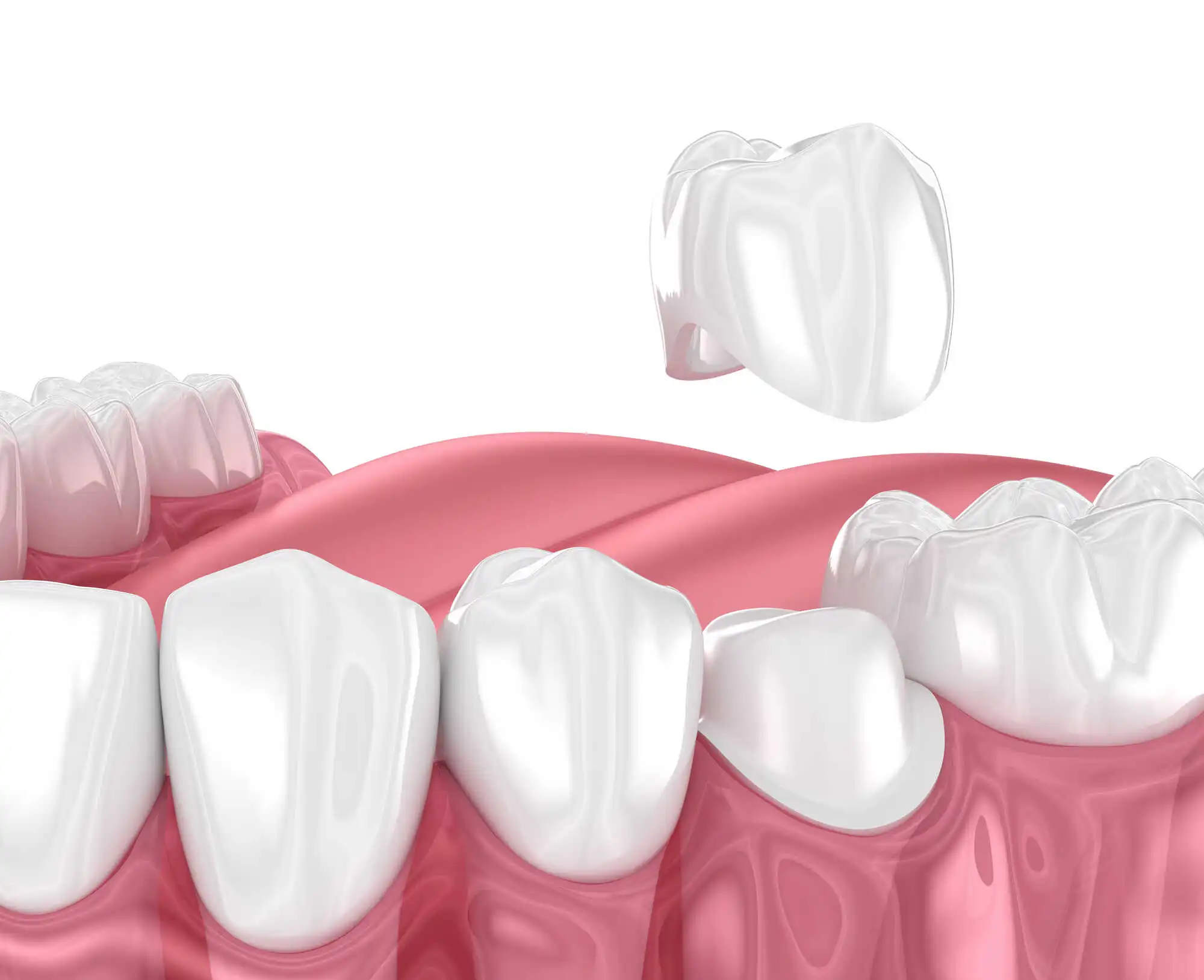When teeth are missing or so damaged that they cannot be built up with fillings, these can be replaced in the form of crowns and bridges, which are cemented to their own teeth. Such prosthetic solutions are very durable, aesthetically pleasing and will feel like real teeth.
You can also read more about the topic on these pages:
Metal crown
A crown of metal ceramic is the most common type of crown. The crown has an inner core of metal, which is covered with porcelain so that the tooth becomes lifelike. A crown in a metal ceramic can be used on most teeth and gives a durable and beautiful result.
All-ceramic Crown
Crowns in full frame are the most lifelike. In a crown with an alumina / zirconium core, the core is white, which makes it even more lifelike than a crown of metal ceramic. Full crowns of porcelain will reflect the underlying tooth color, since they have no metal core. Full ceramics are preferable when the requirement for aesthetics is most important.
Gold Crowns
Gold crowns are used less often than crowns in metal ceramics and whole ceramics, but are a very safe choice where aesthetics are not crucial, for example with strong chewing pressure or gnashing of teeth.
Pin Crown
Sometimes the tooth is so damaged and short that it cannot carry a crown. Then the dentist can extend the tooth with a pin (pin crown). The pin is fixed inside the root and the tooth must then be root-filled. A crown can then be attached to the pin. Pins are often made of a gold alloy, but also of composite or carbon fiber.
Crown in a day – Cerec
With us you can get a crown in a day. Cerec are ceramic fillings and crowns that are computer-generated directly at the clinic. The dentist grinds the tooth in the same way as when preparing for an ordinary crown. But instead of a regular imprint, it is done digitally. The prepared tooth is filmed with a small camera before it is digitally produced and made in a milling machine. The finished crown can be inserted a few hours later, or the next day.
Types of crowns
Bridges
Bridges are often used when one or more teeth are missing. A prerequisite is that the patient has some strong teeth correctly placed in the mouth, to which the bridge can be attached. Bridges are manufactured by a dental technician in the same way as crowns. In order for a bridge to last, it is important that the patient is careful with cleaning and receives regular follow-up by a dentist or dental hygienist to check the bridge.
How are crowns and bridges made?
They are made by the dentist preparing (shaping) the remains of the tooth. Impressions and color are taken. The work is sent to a dental technician who manufactures the crown / bridge on models that are almost identical to the conditions in the mouth. Meanwhile, the patient wears a temporary crown that protects the tooth. The crown is then tested on the patient, and it is then cemented on top of the prepared tooth with a strong cement.
Local production
With us, you can get new teeth in the same day. We have a separate team of dental technicians attached to the clinic. The fact that all types of dental replacements are produced locally has contributed to an environmentally friendly and time-efficient solution both for our patients and dentists.
Go to the dentist regularly
Crowns and bridges can withstand a lot and are almost indestructible, but the root can still be exposed to caries, so good dental hygiene and regular check-ups are very important.

